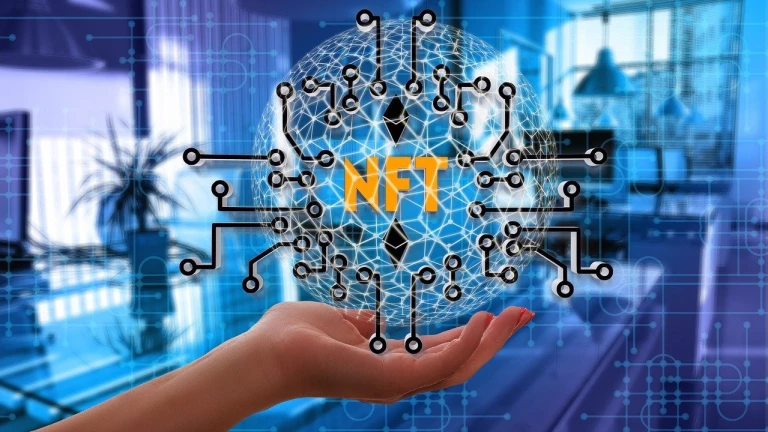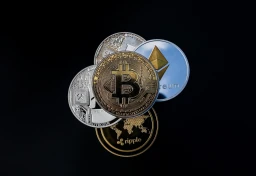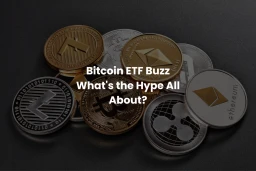What are Non-Fungible Tokens?

Have you heard of non-fungible tokens or NFTs? If not, you’re not alone. Even though the crypto world has been talking about them for a while now, they’re still a bit of a mystery to many people. In this blog post, we’re going to explore what NFTs are and how they work. We’ll also discuss some of the potential implications of this new technology. So if you’ve been wondering what all the fuss is about, read on to find out more.
What are Non-Fungible Tokens?
Non-fungible tokens (NFTs) are digital assets that are not interchangeable. Unlike cryptocurrencies, which are all fungible (1 BTC is equal to 1 BTC), NFTs are unique and represent ownership of a specific item or collection of items.
NFTs can be used to represent anything that is unique and cannot be replaced, such as digital art, in-game items, or collectibles. They are stored on a blockchain, like other cryptocurrencies, but each NFT has its own individual blockchain record.
The most popular platform for buying and selling NFTs is Ethereum, which has native support for NFTs through its ERC-721 token standard. Other platforms that support NFTs include Waves, NEO, and Lisk.
NFTs have gained popularity in recent years due to the rise of blockchain gaming and digital collectibles. The best-known examples of NFTs are CryptoKitties, a game that allows players to breed and trade digital cats, and Decentraland, a virtual world where users can buy and sell land parcels using MANA tokens.
Read Top Selling NFTs by Indian Artists

How do Non-Fungible Tokens work?
Non-fungible tokens (NFTs) are digital assets that are not interchangeable. Each NFT is unique and therefore has a different value. Unlike fungible tokens, which are interchangeable and have the same value, NFTs cannot be divided into smaller units.
NFTs are stored on a blockchain, like other cryptocurrencies. When someone wants to buy an NFT, they use cryptocurrency to purchase it from a marketplace. The transaction is then registered on the blockchain.
The most popular use case for NFTs is in gaming. For example, the game CryptoKitties allows players to breed, collect, and trade virtual cats. These cats are stored as NFTs on the Ethereum blockchain.
Read Top highest Earning NFT Brands 2022
What Are Some Examples of Non-Fungible Tokens?
Non-fungible tokens are a new type of cryptocurrency that are unique and cannot be exchanged for other tokens. Here are some examples of non-fungible tokens:
- CryptoKitties: These are digital cats that can be bought, sold, or traded. Each cat is unique and has its own set of genes, which determines its appearance and characteristics.
- Decentraland: This is a virtual reality world where users can buy, sell, or lease virtual land. The land is stored on the Ethereum blockchain and each piece of land is represented by a non-fungible token.
- ERC721: This is a standard for creating non-fungible tokens on the Ethereum blockchain. It allows for the creation of unique tokens that can represent anything from digital art to collectibles.
- Bitcoin: While not technically a non-fungible token, Bitcoin is often considered to be one due to its limited supply of 21 million coins.
Also Read Top Indian NFT Artists.
What are the advantages of NFTs?
Non-fungible tokens offer a number of advantages over traditional assets. They are more resistant to counterfeiting and fraud and can be stored more securely. They also offer greater divisibility, meaning that they can be divided into smaller units and traded more easily.
NFTs also have the potential to offer new levels of provenance and transparency. By embedding data into the token itself, NFTs could provide information about the history of an asset, where it came from, and who has owned it. This could help to increase confidence in the authenticity of an asset and make it easier to track its value over time.
What are the disadvantages of NFTs?
NFTs have a few disadvantages when compared to other types of digital assets. For one, they are often more expensive and harder to trade than other digital assets. This is because NFTs are not interchangeable like many other digital assets, which can be bought and sold on exchanges. Additionally, NFTs can be subject to fraud due to their lack of regulation. There have been several instances of people creating fake NFTs and selling them for a profit. Finally, NFTs can be difficult to store and manage. This is because they are often stored on blockchain platforms that can be complicated to use for those who are not familiar with the technology.
Read: NFT Scams: How to Avoid NFT Scams?
How Can I Buy NFTs?
NFTs can be bought in a few different ways. The most common way to buy NFTs is through online marketplaces. There are a few different marketplaces that sell NFTs, and they all work slightly differently. Some of the more popular ones include OpenSea, Mintable, and Rarible.
Another way to buy NFTs is directly from the creators themselves. This is usually done through platforms like Ethereum’s decentralized application (dApp) called SuperRare. If you find an artist or creator whose work you like, you can usually purchase their NFTs directly from them.
Lastly, you can also buy NFTs at auction houses. These are similar to traditional art auctions, except that instead of bidding on physical paintings or sculptures, you’re bidding on digital artworks stored as NFTs. Christie’s recently held the world’s first major NFT art auction, which featured works by some of the most well-known names in the digital art world.









